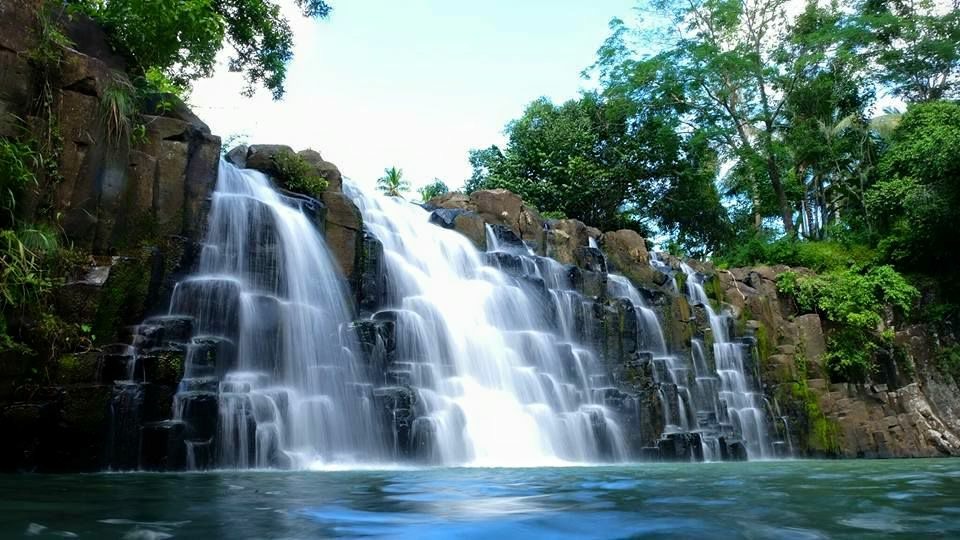
Bulingan Falls by PeterParker22
Welcome to Lamitan City: The Heart of Basilan
On the northeastern coast of Basilan Island in the Sulu Archipelago, sits Lamitan a vibrant, culturally rich component city and provincial de Jure capital of Basilan province. It blends history, tradition, and natural beauty. Despite misconceptions, it offers a warm and inviting atmosphere—one that’s best experienced firsthand. This coastal city has 45 barangays, a 2020 population of 100,150 people, and a land area of 354.45 sq. kilometers (136.85sq. miles).
A Tapestry of Culture & Heritage
- Origins & Founding
Lamitan owes its name to Lami-Lamihan, a term meaning conjugal feast or tribal conference—an echo of its communal, celebratory roots. In 1886, Pedro “Datu Kalun” Cuevas, a revolutionary hero and local leader, founded the settlement that evolved into modern-day Lamitan. - Ethnic Mosaic
Home to the Yakan, Tausug, and Chavacano communities, Lamitan is a living tapestry of Muslim and Christian traditions coexisting in harmony. - Lami-Lamihan Festival
Celebrated annually in June, this vibrant festival brings tribal dances, colorful floats, and cultural pageantry to city streets—honoring the Yakan legacy and Datu Kalun himself.
by Mark Ceniza
Must-Visit Attractions
- Bulingan Falls: A breathtaking 21-ft cascade spilling over natural cuboidal rock formations, nestled amid lush woodland. Just 9.5 km from the city proper, it’s a refreshing escape for families and solo travelers alike.
- GAMABA Weaving Center: Meet the descendants of Ambalang Ausalin, the celebrated National Living Treasure master weavers of Yakan cloth. The center, opened in 2019, preserves intricate textile traditions passed through generations.
- Wee Siu Tuy Library & Lamitan Museum: Housed in a historic building donated by a Chinese Filipino philanthropist, this museum-library combo offers rich insights into local history, culture, and the famed Lami-Lamihan festival.
- Datu Kalun Park & Shrine: Honor the city’s founder, Pedro Cuevas, at this serene triangular park in Barangay Malinis. Nearby is his tomb and a commemorative statue—tangible links to Lamitan’s past.
- Coastal Gems: Lamitan boasts stunning but underexplored beaches: Palm Beach (a.k.a. People’s Paradise), Calugusan Beach, Malo-ong Canal, and Tumakid Beach—ideal for relaxing or snorkeling.
Local Life & Economy
Lamitan thrives on agriculture—rice, rubber, coffee, garlic—and cottage industries like pottery, blacksmithing, furniture-making, and weaving. The public market is alive with local flavors like lokot-lokot (rice flour crisps) and panyalam (sweet fritters).
by Kuya Glenn
Getting There & Around
- Access: Daily ferries from Zamboanga City to either Lamitan or nearby Isabela City. Road travel via habal-habal (motorcycle taxi) or bus takes about 40 minutes.
- Tip: Connect with the Lamitan City Tourism Office for guides, permits, and local insight.
Why Visit Lamitan?
- Genuine Hospitality: Experience heartfelt Yolkan warmth and welcome from the community.
- Living Traditions: Witness centuries-old weaving and tribal customs preserved by master artisans.
- Untouched Nature: From hidden waterfalls to secluded beaches, perfect for photographers and adventurers.
- Rich History: Delve into the legacy of local heroes, colonial settlements, and harmonious cultural fusion.
Sample 2-Day Itinerary
| Day | Morning | Afternoon | Evening |
| 1 | Ferry arrival | GAMABA Weaving Center | Stroll Datu Kalun Park + dinner in town |
| 2 | Bulingan Falls trek | Lamitan Museum + Public Market | Beach at Palm or Calugusan |
Final Thoughts
Lamitan City is more than a destination—it’s an invitation to explore tradition, history, and nature in perfect harmony. From the gentle rush of Bulingan Falls to the vivid threads woven by Yakan masters, every corner tells a story. If you’re ready for a journey off the beaten path, Lamitan awaits with open arms.
Travel Tip: Lamitan has largely overcome security concerns and is regularly patrolled—visit confidently, with respect for local customs and community-led tourism. The best experiences come from engagement with its people and cultural stewards.
by MOTORATZ ( Jessie Dulay )